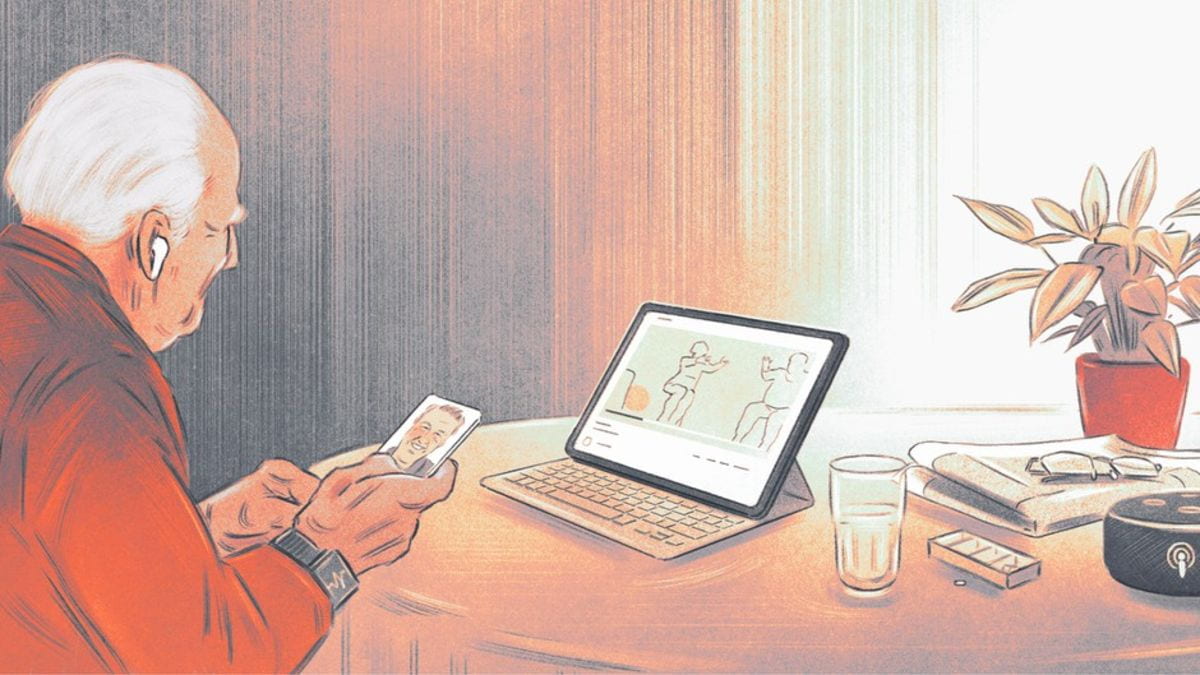by Sarah Aita

In 2007, the World Health Organization (WHO) spearheaded a plan to make cities more inclusive for older populations. Ever since, a growing number of cities and towns have invested in programs and infrastructures in which older adults can age-in-place and lead a healthy, active life. Yet, in the wake of COVID-19, the lives of aging communities were disproportionately impacted, as they experienced larger health risks and social isolation. The shift to online modes of communications posed a challenge to an already problematic social infrastructure, especially in aged-care facilities. Given that online tools are likely to stay as part of the “New Normal”, planners might need to think of a -slightly- smarter age-friendly environment.
Age-friendly environments prioritize the health and well-being of older adults and, ultimately, improves the livability of spaces for people of all ages. Planning an age-friendly city requires adopting an inclusive planning approach and ensuring that eight domains of livability are accessible to older adults. These domains are: outdoor spaces and buildings; transportation; housing; communication and information; community and health services; respect and social inclusion; civic participation and employment; and social participation (WHO, 2007). A survey conducted by the American Association for Retired Persons (AAAP) shows that age-friendly initiatives greatly reduced the impacts of COVID-19, as they were able to utilize existing partnerships and volunteer networks to overcome different challenges (AARP, 2020).
Efforts pertaining to social inclusion and participation domains have been particularly challenging during the pandemic, as many older adults started to embrace digital communication tools. Since lockdowns began in March 2020, older people around the world were told to “isolate in place” and could no longer meet their families and loved ones. In aged-care facilities, group activities, and intergenerational programs were halted due to the risk of spreading COVID-19 (Simard & Volicer, 2020). To overcome this isolation, many older adults started using digital tools to communicate with people and to attend social and religious events. However, adequate access to the internet and technology has been largely problematic (AARP, 2020). AARP reports a “growing need for a better communication infrastructure”, as studies have shown that online visits have made residents in aged-care facilities feel less lonely (Simard & Volicer, 2020; Derynda, et al., 2020). The pandemic has merely accelerated an existing demand for age-friendly digital infrastructure, imposed by the next cohort of older adults. Unlike the current aged-care residents, the “baby boomer” generation is savvier with technology and already uses social media platforms like Facebook (Vogels, 2019).
As more older adults embrace technology, there is a need to introduce digital infrastructure as a new domain for age-friendly cities and utilize it to improve civic and social participation for older adults (Marston, et al., 2020). During the pandemic, many urban planners relied on virtual placemaking and online community development programs, which are likely to remain part of the “post-covid normal”. Integrating technology with different age friendly initiatives would ensure that older adults are included. This could happen via intergenerational programs, which center around community interactions that deepen and maintain intergenerational relationships and benefit all parties involved (Buffel, et al., 2014). A major example of such programs are campus-based retirement homes, where art students can get free accommodation in return for scheduled performances and group activities. Intergenerational programs should start including digital-focused activities such as listening to podcasts, live webinars, and self-guided tours, all of which are becoming essential urban planning tools. That, of course, should be coupled with providing accessible computers and improving internet connections.
As industries move fast towards a more digital world, the domains of a healthy age-friendly environment should be in line with that change. Otherwise, we would risk creating a gap between older people and the industries that they intersect with.
Cover Image Source: Illustration by Isabel Seliger for Bloomberg’s CityLab